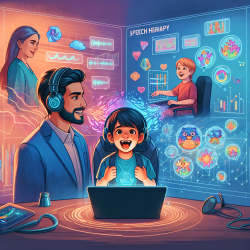Building a Neurodiversity-Inclusive Campus: A Data-Driven Approach
In recent years, the number of neurodivergent students attending postsecondary institutions has increased significantly. However, these students continue to face barriers that hinder their success. A recent study, "Building Neurodiversity-Inclusive Postsecondary Campuses: Recommendations for Leaders in Higher Education," highlights key strategies to foster a more inclusive environment for neurodivergent students. As practitioners in the field, we can leverage these insights to improve our practices and outcomes for these students.
Understanding the Challenges
Neurodivergent students, including those with autism and ADHD, often encounter challenges related to stigma, prejudice, and inadequate accommodations. These barriers can impede their academic success and overall well-being. The study emphasizes that addressing these issues requires a system-wide approach that integrates diversity, equity, and inclusion (DEI) principles with practical accommodations and support systems.
Key Recommendations for Practitioners
- View Neurodiversity Through a DEI Lens: Recognize neurodiversity as an integral part of DEI initiatives. Ensure that DEI personnel are equipped to address issues affecting neurodivergent individuals and collect data to track their representation and challenges.
- Establish Disability Cultural Centers: Create spaces that promote positive disability identities and provide a base for neurodiversity initiatives. These centers should be accessible and located alongside other cultural centers to facilitate intersectional collaborations.
- Enhance Accommodations and Supports: Streamline the process for obtaining accommodations by providing a single point of contact for students. Accommodations should be person-centered and developed collaboratively with the student.
- Improve Mental Health Support: Offer sustained mental health services tailored to the needs of neurodivergent students. Hire counselors with expertise in supporting these individuals and provide mental health support groups.
- Flexible Communication and Instruction: Offer multiple modalities for communication and instruction to accommodate diverse needs. This includes providing options for online or in-person classes and various ways to demonstrate learning.
Encouraging Further Research and Implementation
While the study provides a robust framework for improving neurodiversity inclusion in higher education, it also highlights the need for ongoing research and adaptation. Practitioners are encouraged to engage with these recommendations, adapt them to their specific contexts, and contribute to the growing body of knowledge in this area.
To read the original research paper, please follow this link: Building Neurodiversity-Inclusive Postsecondary Campuses: Recommendations for Leaders in Higher Education.










